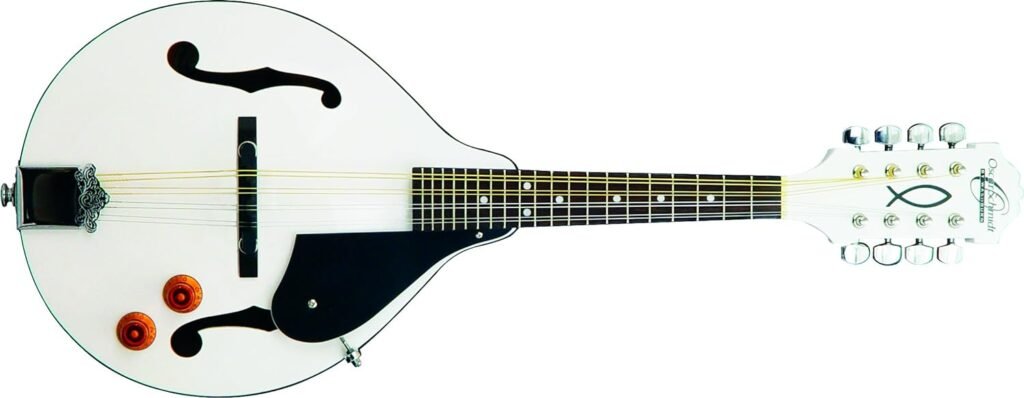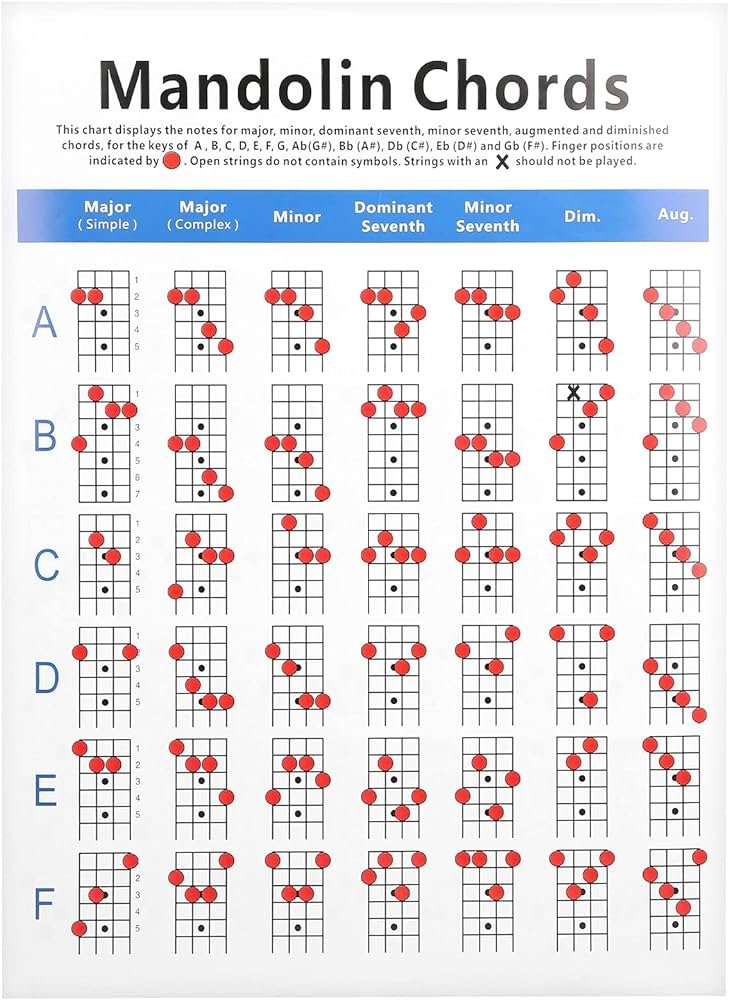How to Play the Mandolin for Beginners: 5 Steps to Get Started
Introduction to the Mandolin

The mandolin, a stringed musical instrument in the lute family, has a rich history dating back to the 17th century. Originating in Italy, the mandolin evolved from the lute and took on a unique identity, characterized by its small, teardrop-shaped body and eight strings arranged in four pairs. Throughout its evolution, the mandolin has found a place in different musical traditions, ranging from classical compositions to folk melodies and bluegrass tunes.
One of the mandolin’s most appealing features is its distinctive sound. The instrument produces a bright, resonant tone that stands out in any musical ensemble. This unique sound is achieved through the mandolin’s double-string configuration, which allows for both strumming and intricate fingerpicking techniques, making it versatile for various musical styles. Whether you are drawn to the lively rhythms of bluegrass, the haunting melodies of folk music, or the refined elegance of classical pieces, the mandolin can cater to diverse musical tastes.
For beginners, the mandolin presents an accessible entry point into the world of music. Its relatively small size and lightweight construction make it easy to handle, even for young learners. Additionally, the mandolin’s tuning, which is similar to that of the violin, facilitates the learning of scales and chords, providing a solid foundation for musical education. The instrument’s popularity in genres like bluegrass and folk also means that there are abundant resources available for new players, including tutorials, sheet music, and community groups.
The mandolin’s role in various music genres is a testament to its versatility and enduring appeal. In bluegrass, it often takes the lead with rapid, rhythmic strumming and melodic solos. In folk music, it adds a layer of depth and texture, complementing vocals and other instruments. Classical mandolin repertoire showcases its capacity for intricate, expressive playing, highlighting the instrument’s range and adaptability. Such diversity makes the mandolin an exciting and rewarding choice for beginner musicians eager to explore different musical landscapes.
Choosing Your First Mandolin

Selecting the right mandolin is a crucial first step for any beginner. The primary consideration should be the body style. There are mainly two types of mandolin body styles: the A-style and the F-style. A-style mandolins have a teardrop shape and are generally simpler in design, making them more affordable for beginners. F-style mandolins, on the other hand, have ornate scrolls and points, making them visually appealing but often more expensive due to the intricate craftsmanship involved.
Wood type plays a significant role in the sound quality and durability of the mandolin. Common wood types include spruce for the top, mahogany or maple for the back and sides, and ebony for the fretboard. Spruce tops are known for their bright, clear tone, while mahogany and maple add warmth and depth to the sound. Ebony fretboards are highly durable and provide a smooth playing experience.
Price range is another major factor to consider. As a beginner, it’s essential to find a balance between cost and quality. Entry-level mandolins can range from $100 to $500, with higher-end models costing significantly more. It’s advisable to set a budget that allows for a good quality instrument without breaking the bank.
When deciding between buying a new or used mandolin, each option has its pros and cons. New mandolins come with warranties and the assurance that the instrument is in pristine condition. However, used mandolins can offer better value for money, especially if they have been well-maintained. Ensure to check for any signs of wear and tear, such as cracks or warping, before making a purchase.
Where you buy your mandolin also matters. Local music shops provide the advantage of trying out the instrument before buying, and you can often get personalized advice from knowledgeable staff. Online stores offer a broader selection and competitive prices, but be sure to read reviews and check return policies. Reliable online retailers often provide detailed descriptions and customer reviews to help you make an informed decision.
Basic Mandolin Anatomy and Tuning
The mandolin, a member of the lute family, has a distinct anatomy that contributes to its unique sound. Understanding the structure of the mandolin is the first step for any beginner. The body of the mandolin is the largest part and features a sound hole that amplifies the sound produced by the strings. The body is connected to the neck, which houses the fretboard. The fretboard is divided into frets, which are the metal bars that indicate where you should press the strings to produce different notes.
The mandolin typically has eight strings, arranged in four pairs, and these are attached to the tuning pegs at the headstock. The tuning pegs are crucial for adjusting the pitch of each string. The bridge, located on the body of the mandolin, supports the strings and transfers their vibrations to the body, enhancing the instrument’s sound.
Tuning the mandolin is an essential skill for any player. The standard tuning for a mandolin is G-D-A-E, starting from the lowest pair of strings to the highest. To tune your mandolin, you can use an electronic tuner, a tuning fork, or a piano. Begin by tuning the lowest pair of strings to a G note. Once the G strings are in tune, proceed to the D strings, then the A strings, and finally the E strings. Make sure each pair of strings is perfectly in tune with each other, as this affects the overall sound quality.
Keeping your mandolin in tune is crucial for producing a harmonious sound and ensuring that your practice sessions are productive. Regularly check the tuning before you start playing, as changes in temperature and humidity can cause the instrument to go out of tune. By familiarizing yourself with the mandolin’s anatomy and mastering the tuning process, you lay a solid foundation for your musical journey.
Essential Mandolin Techniques

Mastering essential mandolin techniques is a foundational step for any beginner. Learning how to properly hold the mandolin is critical, as it ensures comfort and prevents strain during practice. Sit or stand with a straight back, resting the mandolin comfortably against your body. Use a strap if needed to support the instrument’s weight. Ensure that your left hand is free to move along the neck without bearing any weight.
Proper hand positioning is another key aspect. Your left hand should form a relaxed ‘C’ shape, with your thumb resting behind the neck. This thumb placement provides stability and allows your fingers to press down on the strings with precision. Avoid pressing too hard, as a gentle but firm touch is sufficient to produce clear notes. Your right hand should be positioned over the sound hole or slightly above it, depending on your preference. Aim for a relaxed wrist and fluid motion.
Basic strumming and picking patterns are fundamental techniques that every beginner should practice. Start with simple downstrokes using a pick, ensuring that you strike all the strings evenly. Gradually incorporate upstrokes to create a more dynamic sound. Alternate picking, where you switch between downstrokes and upstrokes, is essential for faster playing and intricate melodies.
Practicing these techniques regularly is crucial for building muscle memory and improving your overall playing skills. Allocate time each day to focus on hand positioning, strumming, and picking. Begin with slow, deliberate movements and gradually increase speed as you become more comfortable. Consistency in practice will lead to noticeable improvements, making your playing more fluid and enjoyable.
By mastering these essential mandolin techniques, you’ll lay a solid foundation for more advanced playing. Remember, patience and regular practice are your best allies in becoming a proficient mandolin player.
Learning Basic Chords and Scales
Mastering basic chords and scales is a crucial step for any beginner learning to play the mandolin. These foundational elements will enable you to play a wide variety of songs and begin improvising solos. Let’s start with some essential chords: G, C, D, and A.
The G chord is one of the most commonly used chords in mandolin music. To play a G chord, place your index finger on the second fret of the A string, your middle finger on the third fret of the E string, and your ring finger on the fourth fret of the D string. Strum all four strings to produce a rich, resonant G chord.
Next, let’s look at the C chord. For this chord, position your index finger on the first fret of the D string and your middle finger on the second fret of the A string. The other strings are played open. This chord is fundamental in many folk and bluegrass songs.
The D chord requires placing your index finger on the second fret of the G string, your middle finger on the second fret of the E string, and your ring finger on the fourth fret of the D string. Strum all strings to produce a clear D chord.
Finally, the A chord is played by placing your index finger on the second fret of the G string and your middle finger on the second fret of the D string. The A and E strings are played open. This chord is often used in various genres, including country and rock.
In addition to chords, scales are essential for understanding mandolin music. Start with the G major scale, which consists of the notes G, A, B, C, D, E, and F#. Practice this scale by playing the following frets on each string: G string (0, 2), D string (0, 2, 4), A string (0, 2, 4), and E string (0, 2). Familiarize yourself with the finger placements and patterns, which will help you navigate the fretboard more efficiently.
To reinforce your learning, practice transitioning smoothly between these chords and playing the G major scale daily. This repetition will build muscle memory, making it easier to play songs and create your own music over time. Remember, patience and consistent practice are key to mastering the mandolin.
Playing Your First Song
Learning to play your first song on the mandolin can be an exciting and rewarding experience. As a beginner, it’s important to start with a simple song that is both enjoyable and manageable. Selecting an easy beginner song will help you build confidence and establish a solid foundation for your mandolin playing journey. “Twinkle, Twinkle, Little Star” is a great choice as it is familiar, easy to follow, and uses basic chords and melodies.
Before you begin, ensure you have the sheet music or tablature for the song. Tablature, or tabs, is a popular and user-friendly notation for mandolin players, as it indicates which strings to pluck and which frets to press. For “Twinkle, Twinkle, Little Star,” you will need the following tabs:
Twinkle, Twinkle, Little Star Tabs:
e|—————-|—————-|—————-|—————-|
A|–0–0–7–7—|–9–9–7——-|–5–5–4–4—|–2–2–0——-|
D|—————-|—————-|—————-|—————-|
G|—————-|—————-|—————-|—————-|
Begin by breaking down the song into manageable sections. Start by practicing the first two lines, focusing on playing the correct notes and maintaining a steady rhythm. Play slowly at first, ensuring accuracy before gradually increasing your speed. Once you are comfortable with the first section, move on to the next, and continue this process until you can play the entire song smoothly.
It is essential to practice regularly and be patient with yourself as you learn. Consistent practice will help you develop muscle memory and improve your finger dexterity. As you become more proficient, try experimenting with different tempos and dynamics to add expression to your playing.
By following these steps and practicing diligently, you’ll find that playing your first song on the mandolin is not only achievable but also an enjoyable and motivating experience. Keep practicing and exploring new songs to continue improving your skills and expanding your repertoire.
Developing a Practice Routine
Establishing a consistent practice routine is crucial for anyone aiming to master the mandolin. Regular practice not only helps in building muscle memory but also enhances one’s ability to play with precision and confidence. A well-structured practice routine can make the learning process both effective and enjoyable.
Begin by setting clear, achievable goals. Whether it’s mastering a particular chord, improving your finger placement, or learning a new song, having specific objectives will keep you motivated. Break down these goals into smaller, manageable tasks to avoid feeling overwhelmed. For instance, if your goal is to learn a new song, start by practicing the chords, then move on to the strumming pattern, and finally work on combining both.
Divide your practice time wisely. Allocate time for warm-up exercises, as they are essential in preparing your fingers and hands for more challenging tasks. Spend a portion of your practice session on technical exercises, such as scales and arpeggios, to improve your finger dexterity and speed. Another segment should be dedicated to practicing songs, as applying techniques in a musical context is vital for progress.
Incorporate tools such as metronomes and backing tracks into your practice sessions. A metronome will help you develop a sense of timing and rhythm, ensuring that you play at a consistent tempo. Start slow and gradually increase the speed as you become more comfortable with the piece. Backing tracks are also beneficial as they simulate playing with a band, enhancing your ability to stay in sync with other instruments.
Finally, consistency is key. Aim to practice a little each day rather than cramming long sessions sporadically. Even 20-30 minutes of focused practice can yield significant improvements over time. Remember, the goal is to build a routine that is sustainable and enjoyable, making your journey with the mandolin a rewarding experience.
Resources for Mandolin Players
Embarking on the journey to learn the mandolin can be immensely rewarding, and having the right resources at your disposal can make the process smoother and more enjoyable. Here, we provide a curated list of essential resources for beginners looking to enhance their mandolin skills.
Online Tutorials: The internet is replete with high-quality mandolin tutorials. Websites such as YouTube offer a plethora of free video lessons that cater to various skill levels. Channels like Mandolessons and Banjo Ben Clark provide step-by-step instructions, covering everything from basic chords to complex melodies. Additionally, platforms like Udemy and MasterClass offer structured courses with professional musicians, providing a more comprehensive learning experience.
Instructional Books: For those who prefer a more traditional route, instructional books can be invaluable. Titles such as “Mandolin for Dummies” by Don Julin and “The Complete Mandolinist” by Marilynn Mair offer detailed lessons and exercises. These books often include accompanying CDs or online audio tracks, allowing you to hear how pieces should sound, which is crucial for mastering the instrument.
Mandolin Communities: Joining a community of fellow mandolin enthusiasts can provide both motivation and support. Online forums like Mandolin Café and Reddit’s r/mandolin offer spaces to ask questions, share progress, and find inspiration. These platforms are also excellent for discovering new music and techniques, as well as for networking with other musicians.
Local Music Groups: Engaging with a local music group can greatly enhance your learning experience. Many towns and cities have folk or bluegrass groups that welcome new members. Participating in these groups not only provides practical playing experience but also keeps you motivated as you interact with like-minded individuals.
Finding a Mandolin Teacher: Personalized instruction can accelerate your progress significantly. Look for a local mandolin teacher who can provide tailored lessons based on your skill level and goals. Many teachers also offer online lessons, providing flexibility for those with busy schedules.
By leveraging these resources, beginners can build a solid foundation and continue to improve their mandolin playing. Whether through online tutorials, instructional books, active communities, or personalized lessons, there are numerous ways to stay motivated and advance your skills.
